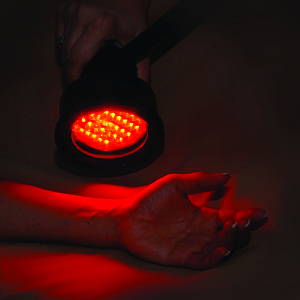Skin Cancer Subtypes
There are many different types of skin cancer. The following is a brief outline of the different types of skin cancer and which cells they come from.
The skin has three very distinct layers, known as the epidermis (the uppermost layer), the dermis (the middle layer) and the subcutaneous fat (the lowest layer). Your skin is made up of a number of different cell types. Keratinocytes are the main building blocks of the top layer of the skin, the epidermis. These cells produce keratin. Keratin is also found in hair and nails. Melanocytes are the pigment cells of the skin. They give the skin it’s colour. Other important cells are the fibroblasts which make collagen in the dermis. Fat cells are present in the subcutaneous layer. There are also nerve cells, cells that make up the blood vessels, hair follicles, sweat and oil glands. A mutation in any of these different kinds of skin cells can lead to the development of a skin cancer.
Skin cancer occurs if the cells of the skin behave abnormally. Specific types of skin cancer can be diagnosed because we can recognise the variant of skin cell from which they originated. For example, the commonest skin cancers are made up of keratinocytes. These cancers may be called Bowen’s disease, squamous cell carcinoma, basal cell carcinoma or keratoacanthoma. They each have their own typical appearance. A melanoma is a form of skin cancer that develops from the melanocytes or skin pigment-producing cells. Melanomas are a much more aggressive form of skin cancer. These can be found in people of all ages, including younger people.
Skin Cancer Treatment
Through knowing the origins of the cells, and some of the issues associated with their malfunctioning, we can best treat the condition.
All skin cancers should be removed. Not all skin cancers need to be excised. The most common approaches to treating cancer include:
- Curettage, cauterisation, or shaving – Shaving and burning the skin cancer (if small) can allow a simple cure.
- Excision biopsy – This involves surgically removing the skin cancer. The skin cancer is cut out under local anaesthesia. This requires stitches and some repair work to keep scarring to a minimum.
- Mohs or dermatological microscopic therapy – When the skin cancer is high grade and/or in a risky area of the skin, microscopic surgery may be used to ensure complete removal. This type of surgery may also limit scarring.
- Photodynamic therapy – This uses a photosensitizing chemical that is activated by special lighting. It specifically targets the cancerous cells (see image).
- Cryotherapy – This is the removal of an early and low grade non-melanoma skin cancer by freezing it with liquid nitrogen.
- Special immune response creams – This requires a series of applications. The creams cause an inflammatory reaction that triggers the body to attack and destroy the cancer cells. The three most commonly used are 5-fluorouracil, ingenol mebutate and imiquimod.
- Radiotherapy – This is also known as radiation therapy. It is usually reserved for high risk tumours. The skin cancer site and the draining lymph node area is usually treated together. Radiotherapy selectively targets cancerous cells. It is good for eliminating the maximum number of cancer cells while still protecting healthy cells nearby.
There are many options for skin cancer treatment. It is important to have a thorough assessment with a dermatologist if you have a history of skin cancer. Dermatologists specialise in both surgical and non-surgical treatment of skin cancer.
If you have any questions or concerns about skin cancer surgery contact your local doctor, who will arrange for you to see a dermatologist. Contact us today.




